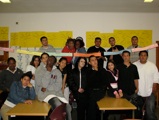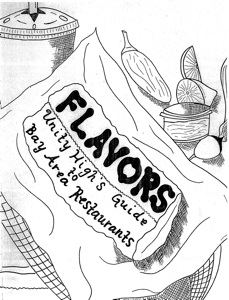The Incarceration Project
Before they graduated, I wanted my seniors to have one last opportunity to make their voices heard in a memorable way. In English, we had just finished reading Twilight, Los Angeles, 1992, a play based on Anna Deveare Smith’s interviews with a wide swath of L.A. residents after the Rodney King riots. For our final project, my students wrote and performed their own play on a controversial issue, based on interviews with residents of the Oakland community. Because so many of my students had family members and friends in prison, or had a loved one become a victim of violence, we chose the topic of incarceration.
Each senior asked a different member of the Oakland community to share their thoughts about incarceration in a thirty-minute tape-recorded interview. In brainstorming the list of interviewees, my students tried to choose people from a diverse range of ethnicities, ages, and viewpoints. In the end, their interviewees included ex-convicts; deputy sheriffs; attorneys; youth activists; former gang members; and parents, siblings, and spouses of inmates. My students transcribed their interviews word by word, and each chose the most poignant excerpts to turn into a monologue he or she would perform. With the help of a volunteer from a local drama company, the students memorized their monologues and injected emotion and action into their performances.
The senior art class built the set for the play, and the government class designed the program, which included historical facts and statistics about incarceration in the United States. Our final performance, “We Don’t See, We Only Hear: A Play about Incarceration,” featured all 34 students in my senior English class, not a single one of whom had any acting experience when we began. Most of these teens had entered high school with middle or elementary school level literacy skills, and more than a quarter of them were English language learners who had been hesitant to speak publicly even in small group settings. But in the end, every single senior performed a memorized monologue, with vocal inflections and action, in front of a packed auditorium. For me it was a vivid reminder of the transformative power of project-based learning.


